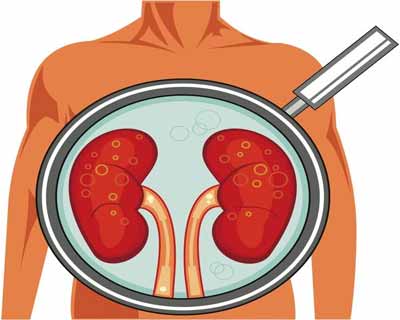- Home
- Editorial
- News
- Practice Guidelines
- Anesthesiology Guidelines
- Cancer Guidelines
- Cardiac Sciences Guidelines
- Critical Care Guidelines
- Dentistry Guidelines
- Dermatology Guidelines
- Diabetes and Endo Guidelines
- Diagnostics Guidelines
- ENT Guidelines
- Featured Practice Guidelines
- Gastroenterology Guidelines
- Geriatrics Guidelines
- Medicine Guidelines
- Nephrology Guidelines
- Neurosciences Guidelines
- Obs and Gynae Guidelines
- Ophthalmology Guidelines
- Orthopaedics Guidelines
- Paediatrics Guidelines
- Psychiatry Guidelines
- Pulmonology Guidelines
- Radiology Guidelines
- Surgery Guidelines
- Urology Guidelines
IJCCM Study compares SLED or CRRT in acute Kidney Injury patients with Septic Shock

Acute kidney injury (AKI) is common in patients of septic shock. There is sparse data comparing sustained low-efficiency dialysis (SLED) and continuous renal replacement therapy (CRRT) in patients with septic shock. This was the focus of Doctors Shakti Bedanta Mishra, Afzal Azim, Narayan Prasad, Ratendra Kumar Singh, Banani Poddar, Mohan Gurjar, Arvind Kumar Baronia who performed a pilot randomized controlled trial of comparison between extended daily hemodialysis and continuous veno-venous hemodialysis in patients of acute kidney injury with septic shock
For the purpose of the study, sixty adult patients with septic shock who were to undergo dialysis for AKI were included and were randomly assigned to SLED or CRRT group. Hemodynamic instability was defined as in terms of vasopressor dependency (VD). The worst value of VD during the dialysis session was taken into consideration. The primary objective was look at hemodynamic changes and secondarily into the efficacy.
The researchers found that the demographic data were comparable between the sixty patients randomized to thirty in each group. Delta VD and delta vasopressor index (DVI) were similar in SLED group compared to the CRRT group. CRRT group had better efficacy in terms of both equivalent renal urea clearance though fluid balance was not significantly better in CRRT group.
The authors concluded that SLED is a viable modality of renal replacement therapy in patients with septic shock as the hemodynamic effects are similar to CRRT.
The Study has been published in Indian Journal of Critical Care Medicine, the official journal of Indian Society of Critical Care Medicine
check details on the link given below.
Mishra SB, Azim A, Prasad N, Singh RK, Poddar B, Gurjar M, Baronia AK. A pilot randomized controlled trial of comparison between extended daily hemodialysis and continuous veno-venous hemodialysis in patients of acute kidney injury with septic shock. Indian J Crit Care Med [serial online] 2017 [cited 2017 Jun 8];21:262-7. Available from: http://www.ijccm.org/text.asp?2017/21/5/262/206284

Disclaimer: This site is primarily intended for healthcare professionals. Any content/information on this website does not replace the advice of medical and/or health professionals and should not be construed as medical/diagnostic advice/endorsement or prescription. Use of this site is subject to our terms of use, privacy policy, advertisement policy. © 2020 Minerva Medical Treatment Pvt Ltd